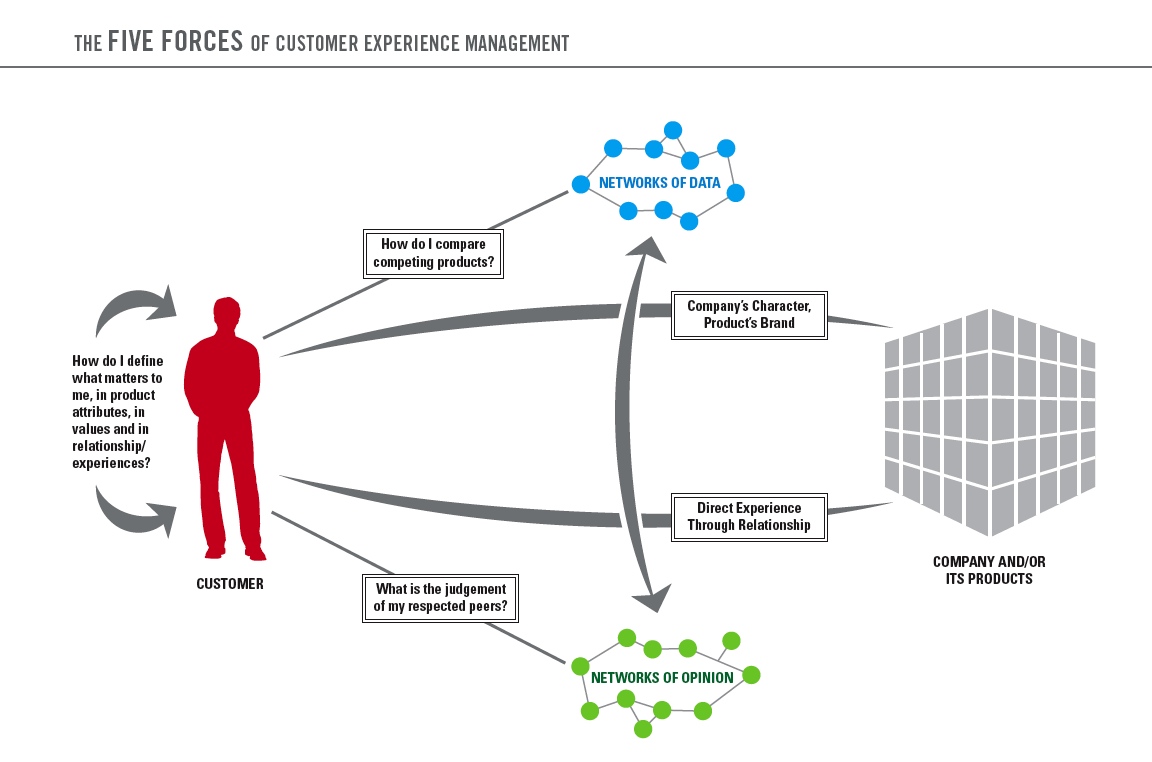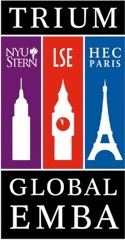cem's five forces
 Thursday, March 24, 2011 at 9:57AM
Thursday, March 24, 2011 at 9:57AM I keep getting asked about my five forces model for customer experience management. And while I certainly crafted them thinking specifically about customer experience, the framework fundamentally redefines how a business should operate. It clarifies what a business should measure and how they interact with various "forces" that surround them.
I saw a great article that summarized a few top marketing frameworks, and I was inspired to comment on it giving a quick summary of my model. Here's what I said:
Five forces of customer experience
A model I've been developing and applying successfully is what I call the Five Forces of customer experience.
The core inspiration is the idea that value is created in the mind of the customer. What someone is willing to pay is based on a complex mix of perception drivers. How these perceptions are created, and can be managed by companies, are topics critical for businesses to understand. It makes explicit a lot of the underlying assumptions in Porter's Five Forces - you'll note that his forces do not explicitly include people.
The five forces of customer experience that I have identified and named are:
1. The person (how do I define value? how do I define values? what emotions are in play? what rationales are in play?). This is the discipline that brings together decades of work on cognitive, behavioral, cultural, and brain studies. You can't be a good marketing company anymore without knowing who Daniel Kahneman is. Nor can you be an international company without knowing the work on extending Sproles/Kendall to multiple cultures, or the GLOBE cultural taxonomy, or concepts like power, distance, and so on.
2. Networks of data. (Comparison sites may be an example, but they quickly morph into the third force below.) A network of data might include product specifications, maps, fact sheets, Wikipedia. They tend to allow the customer to form an opinion with minimal tendentiousness. While these sites are important, especially for complex or technical purchases and in the B2B environment, in my own view, their value is swamped by the third force.
3. Networks of opinion. (Comparison sites, UGC sites such as Yelp, Facebook, etc.). Networks of opinion are trusted because they include "people like me." These people may be proxies for networks of data (experts), or they may simply be taste-makers/trendsetters (the hipsters on Yelp). Influence analytics matter here.
4. The company's brand. (What do you expect from a company based on their public presence and reputation?) Boy, we could go on and on about brand. What I love is the concept of "brand hijack," which shows that a customer-centric set of forces is essential to understanding a company's market valuation. The brand (with positive and negative spill from the sector or past history) is a key component of reputation, and therefore reputational risk.
5. The company's interactions with a person. (How do representatives of the company, and representations of the company, such as CSR personnel, websites and tweets, advance or destroy my sense of the brand and/or support or threaten my value/values/emotional/cultural frameworks?) Of all the forces, this one is probably the most important for any company. Gallup and Carlson have both developed bundles of experience drivers, named in a proprietary way, that are heavily driven by interactions, usually over time. These interactions happen at "touchpoints" -- and companies have an opportunity to manage these touchpoints to trigger and mitigate the forces above, in a way that balances customer needs with brand values. Nevertheless, if a company's interactions with customers have been positive, but the company does something that violates the values frameworks obtaining in a market relationship, all those past interactions are discounted. (Just look at Netflix's stock performance after then announced their plan to break up the DVD and streaming businesses.)

You can find out more about CEM's Five Forces at these links:
Culture: A CEM "Five Force" Member




Reader Comments